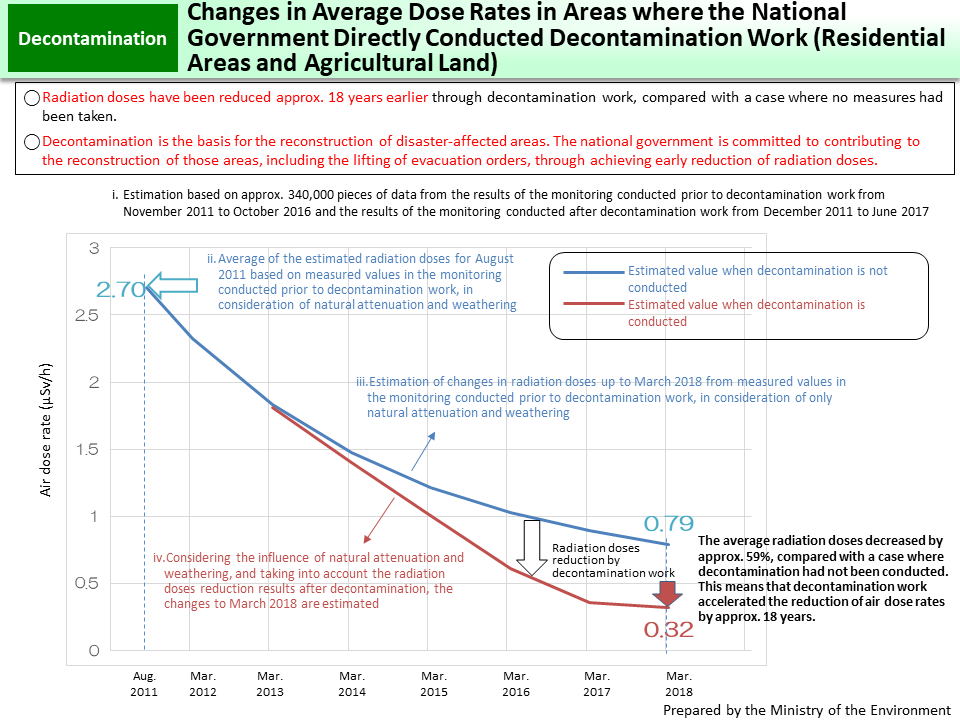Changes in Average Dose Rates in Areas where the National Government Directly Conducted Decontamination Work (Residential Areas and Agricultural Land)
This figure shows decreases in doses of accident-derived radioactive materials as estimated based on approx. 340,000 pieces of data from the results of the monitoring conducted prior to decontamination work from November 2011 to October 2016 and the results of the monitoring conducted after decontamination work from December 2011 to June 2017.
The blue line in the graph shows air dose rates estimated based on the values of August 2011 only taking into account the influence of natural attenuation and weathering (natural factors such as wind and rain). The red line in the graph shows air dose rates estimated also taking into account the effects of decontamination. When comparing both of these air dose rates as of March 2018, it is known that the average air dose rates decreased by approx. 59% as a result of decontamination. This means that the reduction of air dose rates was accelerated by approx. 18 years through decontamination work.
In this manner, decontamination work has brought about an earlier reduction of radiation doses, while assisting the effects of natural attenuation of radioactive materials.
(Related to p.11 of Vol. 1, “Half-lives and Radioactive Decay”)
- Included in this reference material on March 31, 2014
- Updated on March 31, 2022

